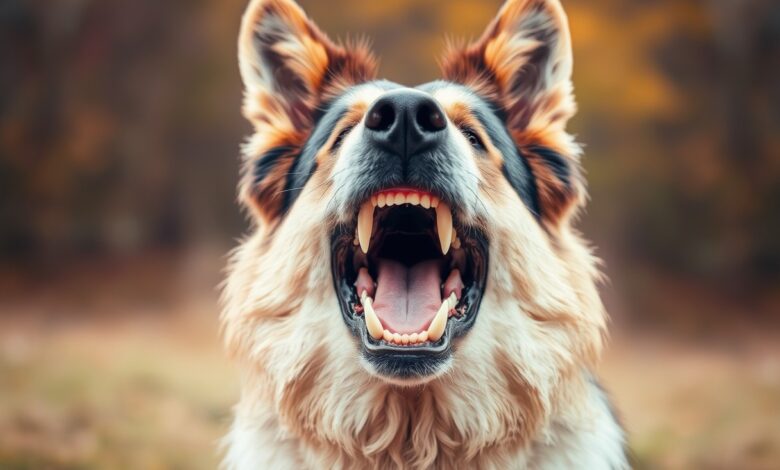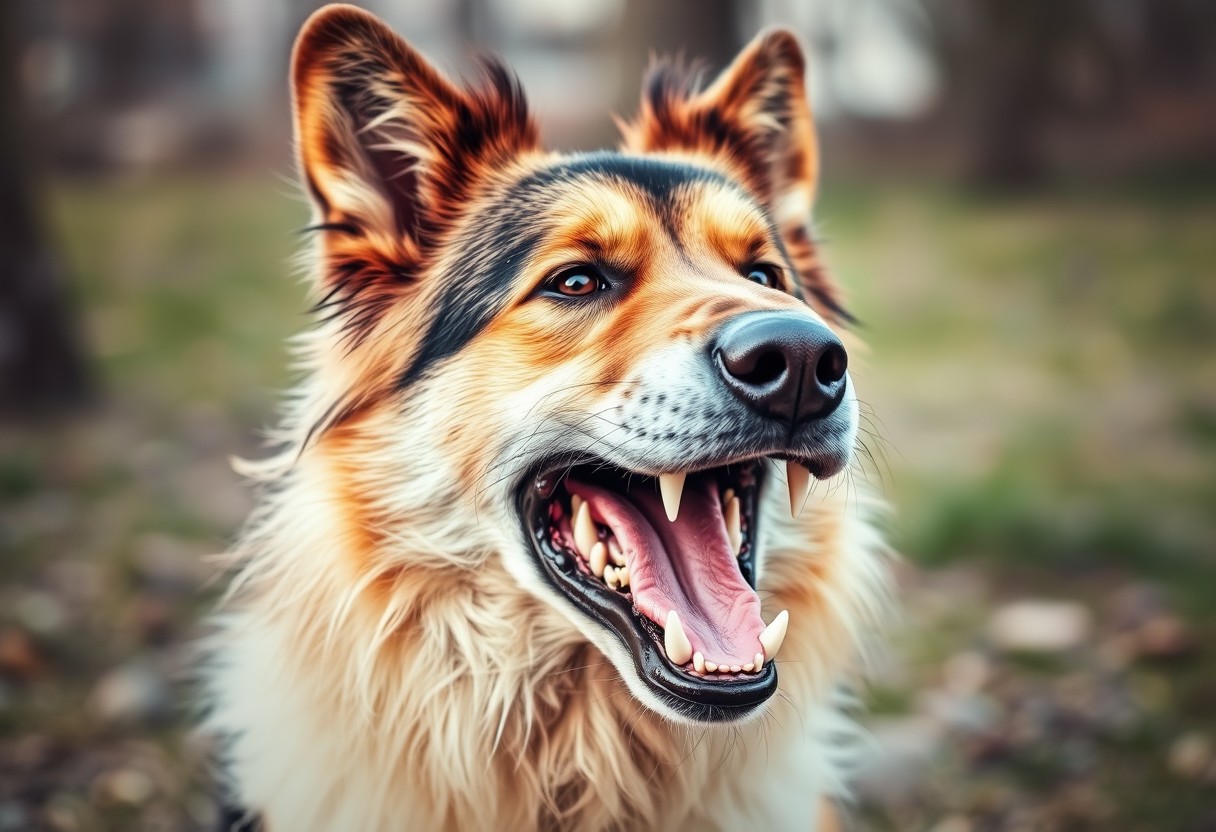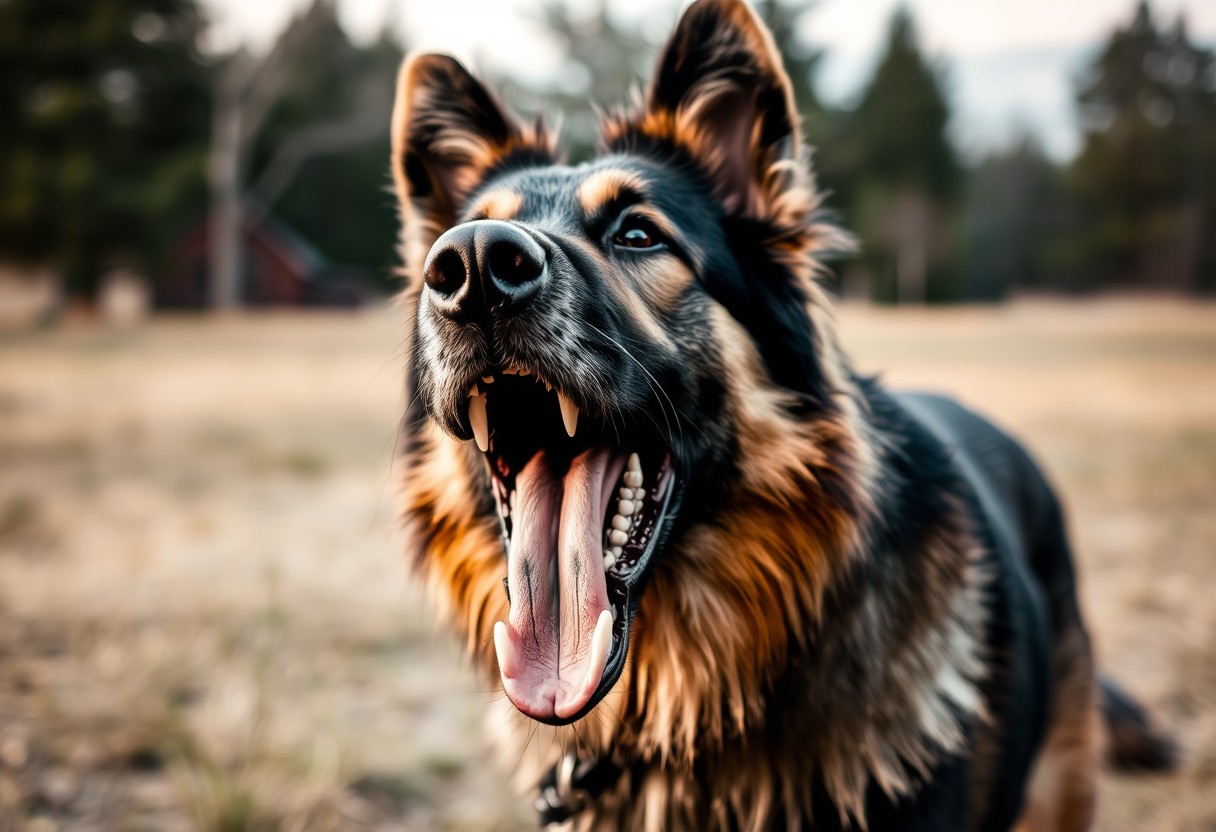Caucasian Shepherd Dog Bite Force – How Powerful Is It?

Many dog owners and enthusiasts often wonder about the bite force of the Caucasian Shepherd Dog, known for its impressive strength and protective instincts. As you investigate into understanding your furry companion, it’s vital to grasp just how powerful their bite can be. This breed is not just a gentle giant; with a bite force ranging from 500 to 700 psi, they rank among the strongest dogs in the world. This power reflects their role as natural guardians, highlighting the need for responsible training and socialization in your experience with this magnificent breed.

Key Takeaways:
- Impressive Bite Force: The Caucasian Shepherd Dog has an exceptional bite force, estimated to be around 700 to 800 PSI (pounds per square inch), making it one of the strongest among dog breeds.
- Protective Instincts: This breed is known for its natural guarding instincts, which contribute to its powerful bite. They are often used for livestock protection and as guard dogs.
- Responsible Ownership: Due to their strength and protective nature, potential owners must be committed to proper training and socialization to ensure that these dogs are well-adjusted and safe in various environments.
Understanding Bite Force
Before entering into the specifics of the Caucasian Shepherd Dog’s bite force, it’s vital to grasp what bite force truly entails. This knowledge establishes a context for comparing various breeds and assessing their capabilities. You will gain a clearer understanding of this powerful aspect of canine anatomy as we explore its implications for both dogs and their owners.
Definition of Bite Force
With every closing jaw, the expression of bite force reveals itself. Bite force is defined as the measure of pressure exerted by a dog’s jaw when biting down, typically expressed in pounds per square inch (PSI). It is assessed using specialized equipment and plays an necessary role in understanding canine anatomy, behavior, and their potential impact on humans.
Factors Influencing Bite Force
Various elements significantly influence a dog’s bite force, including its breed, size, age, and overall health. For example, larger breeds generally possess a more powerful bite force compared to smaller dogs. It’s important to recognize how these factors interplay to determine a dog’s biting capabilities. (Taking these variables into account can help you assess potential risks.)
- bite force
- breed
- size
- age
- health
Influencing your understanding further, each factor plays a specific role in determining how strong a dog’s bite can be. For instance, a young, healthy Caucasian Shepherd may exhibit a stronger bite force than an older, less healthy counterpart. Additionally, genetic predisposition and individual training can also affect the bite’s strength and function. (Always evaluate these factors when choosing a dog for your lifestyle.)
- bite force
- young
- healthy
- genetic predisposition
- training
Due to the complexities surrounding bite force, it’s necessary to understand that not every dog exhibits the same potential. Factors like age and health condition can dramatically alter bite strength. Additionally, training and proper socialization are critical in shaping a dog’s behavior and managing its natural instincts. Focus on these elements when considering the implications of a dog with a powerful bite. Assume that by educating yourself, you can better prepare for responsible dog ownership.
The Caucasian Shepherd Dog Profile
One of the most formidable breeds, the Caucasian Shepherd Dog boasts an impressive history as a livestock guardian in the Caucasus region. Known for its massive size, thick fur, and powerful build, this breed exudes confidence and strength. The Caucasian Shepherd is also characterized by a loyal and protective temperament, making it an ideal watchdog. However, its independence means that proper training and socialization are crucial to bring out its best qualities.
Breed Overview
Before discussing its strength, it’s vital to understand that the Caucasian Shepherd Dog has a rich history as a protector of livestock, developed over generations. Typically, you’ll find this breed exhibiting traits such as a broad head, strong jaws, and a muscular body. They possess a naturally protective nature, which combined with their intelligent and self-reliant temperament, makes them excellent guardians for both families and properties.
Strength and Physical Build
Beside their impressive size, the physical build of the Caucasian Shepherd Dog contributes significantly to their strength and potential bite force. They often weigh between 99 to 170 pounds and measure up to 30 inches tall at the shoulders. This muscular structure coupled with their strong jaws gives them a bite force that is among the strongest in the canine world (owning one requires a strong commitment to training and responsible ownership).
In addition, their thick fur not only protects them from harsh weather conditions but also adds to their formidable appearance, making them intimidating guards. The combination of their size, strength, and determining personality ensures that they can handle any situation effectively (having knowledge about their physical capabilities is key to ensuring safe interactions). If you consider adding a Caucasian Shepherd to your family, understanding these attributes is vital.

Measuring the Bite Force of the Caucasian Shepherd Dog
For many dog owners and enthusiasts, understanding the bite force of the Caucasian Shepherd Dog is imperative for appreciating its strength and temperament. Researchers have implemented various methods to measure this impressive force, including handheld gauges and sophisticated pressure sensors. These measurements provide valuable insights into the dog’s potential for aggression, which can help you make informed decisions about training and socialization.
Measurement Techniques
For accurate bite force assessments, scientists utilize techniques like force gauges and strain gauges, which measure the pressure exerted by the dog’s jaw. These studies often take place in controlled environments to ensure reliability. Practical applications of these techniques include training protocols and behavioral assessments that help dog owners understand the capabilities of their pets.
Comparative Analysis
Against other breeds, the Caucasian Shepherd Dog exhibits a notably high bite force, often ranking among the top contenders in canine strength measurements. Studies indicate that it can exceed the bite forces of many popular breeds, making it imperative for you to approach their care and training with caution. (An informed owner is a responsible owner.)
Comparative Bite Force Results
| Breed | Bite Force (PSI) |
|---|---|
| Caucasian Shepherd Dog | 700-800 PSI |
| Rottweiler | 328 PSI |
| German Shepherd | 238 PSI |
Shepherd breeds have varying bite forces, but the Caucasian Shepherd stands out significantly. With bite forces surpassing many other breeds, understanding this data can aid in temperament training and safety considerations. (This information could impact your decisions about owning a Caucasian Shepherd Dog.)
Comparative Analysis Data
| Breed | Bite Force Comparison |
|---|---|
| Caucasian Shepherd | Higher than most breeds |
| Other Breeds | Varies significantly |
Consequently, the bite force of the Caucasian Shepherd Dog underlines its potential for strength and authority. With a force that can range from 700 to 800 PSI, it is important to understand these attributes as they relate to training, socialization, and behavior management. Being informed enables you to create a safe and nurturing environment for both the dog and the community.

Implications of High Bite Force
All dog breeds with high bite force possess unique traits that shape their interactions with humans and other animals. This strength can often lead to fear or intimidation in unfamiliar situations, potentially resulting in aggressive behavior if not properly managed. Understanding these behavioral aspects allows you to create a safer environment for both you and your pet, especially in social settings. (Socialization is key to mitigating aggression.)
Behavioral Considerations
Against a backdrop of high bite force, Caucasian Shepherd Dogs demonstrate strong protective instincts that can influence their behavior towards strangers and other pets. Their natural guarding disposition may manifest as wariness or dominance, which could lead to conflicts if not addressed effectively. Ensuring your dog understands social cues and boundaries is important for fostering positive interactions with others. (Early exposure to diverse environments can help shape better behavior.)
Training and Management
Management of a strong-bite breed like the Caucasian Shepherd Dog requires a commitment to consistent training. Implementing positive reinforcement techniques, along with clear boundaries, is important for promoting safety and well-being for both you and your dog. Training sessions should be regular and engaging to help your dog reliably respond to commands and exhibit appropriate behavior in various scenarios. (Investing time in comprehensive training ensures a harmonious relationship.)
High bite force breeds, such as the Caucasian Shepherd Dog, demand diligent training and management strategies to minimize risks associated with their powerful jaws. By establishing firm commands and providing continual socialization, you enhance your dog’s ability to interact safely within your household and the community. Prioritize structured training regimes to positively reinforce desired behaviors, thus building a foundation of trust and safety. (Always seek professional guidance if you face challenges in training.)
To wrap up
With this in mind, understanding the bite force of the Caucasian Shepherd Dog is imperative for potential owners and enthusiasts alike. This breed boasts an impressive bite force that can vary, making it one of the stronger breeds out there. If you are considering adding this powerful dog to your family or simply want to learn more about dog breeds, you can explore information on Finding the Strongest Dog Bite in 10 Breeds to further your knowledge on canine strength and safety.
FAQ
Q: What is the bite force of a Caucasian Shepherd Dog?
A: The bite force of a Caucasian Shepherd Dog is estimated to be around 500 to 700 pounds per square inch (PSI). This tremendous bite force places them among the more powerful dog breeds. Their strong jaws are designed to exert considerable pressure, which has historically helped them protect livestock and their territory.
Q: How does the Caucasian Shepherd Dog’s bite force compare to other breeds?
A: In comparison to other dog breeds, the Caucasian Shepherd’s bite force is significantly higher. For instance, breeds such as the German Shepherd and the Rottweiler have bite forces typically around 350 to 450 PSI. This means the Caucasian Shepherd has one of the most formidable bite forces in the canine world, making them particularly effective as guard dogs.
Q: What factors contribute to the bite force of the Caucasian Shepherd Dog?
A: Several factors contribute to the bite force of the Caucasian Shepherd Dog. These include their size and weight, as they are a large and muscular breed. Additionally, their jaw structure is robust and well-adapted for strength. Genetic factors also play a role, as the breed has been selectively bred for thousands of years to perform protective roles. Lastly, the dog’s training and temperament influence how effectively they can utilize their bite force when necessary.





